5 ClickUp Automation Examples for All Businesses
Explore ClickUp automation examples to boost efficiency. Automate task notifications, due date adjustments, and more to streamline your workflow effortlessly.
AUTOMATION BLOGS


Introduction
Boosting productivity and streamlining workflows is essential for any business, and ClickUp makes it easy to do just that with its powerful automation features. Automating repetitive tasks can save you valuable time and help your team focus on what really matters—delivering great work and achieving your goals. Whether you're a small startup or a large corporation, ClickUp offers a range of automation options that cater to your unique needs. Here are five practical ClickUp automation examples that can help businesses of all sizes work smarter, not harder.
Understanding ClickUp Automation
ClickUp allows you to set up automations that trigger specific actions when certain events happen. For example, if a task is completed, you can automatically assign it to someone else or send a notification to your team. This simplifies processes and keeps everyone informed, reducing the chances of things slipping through the cracks. Let’s dive into five handy automation examples you can implement right away to enhance your workflow.
1. ClickUp Email Automation Examples
Task Creation Notifications:
Set up automatic emails to alert team members when a new task is created. For example, if a manager adds a task for an upcoming deadline, everyone involved gets an email with the details right away. This helps keep everyone informed and ready to act.
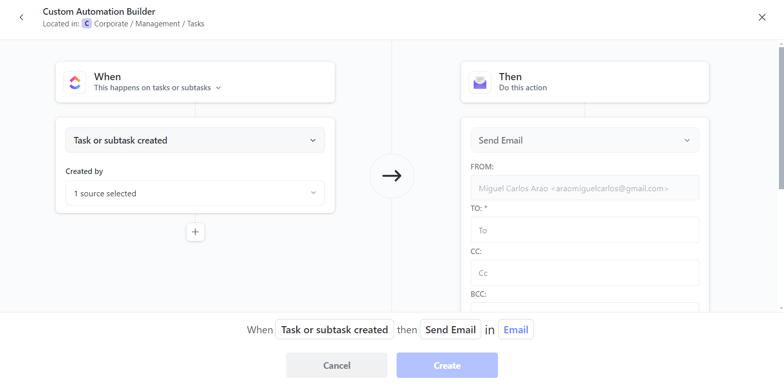

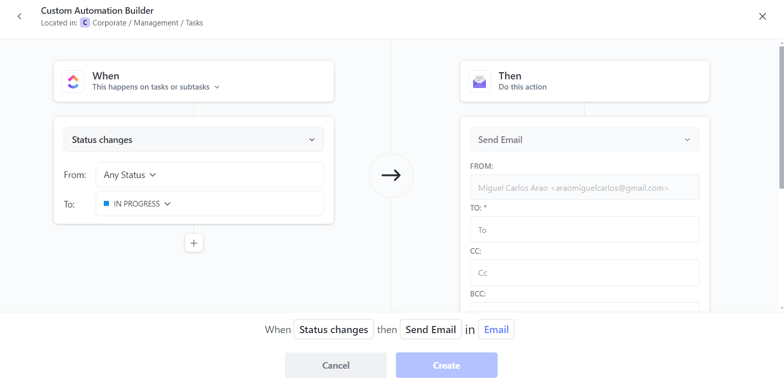

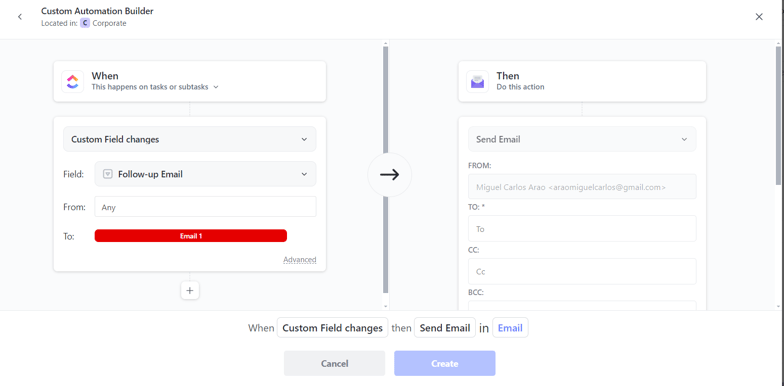

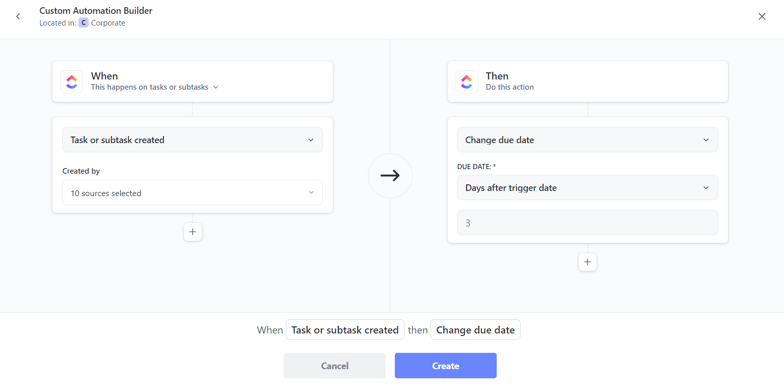

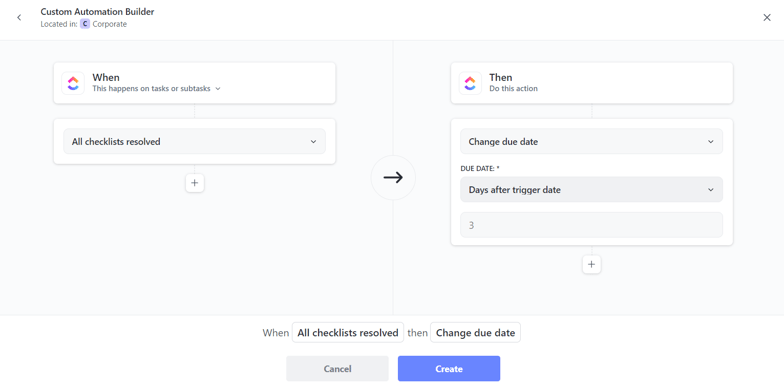

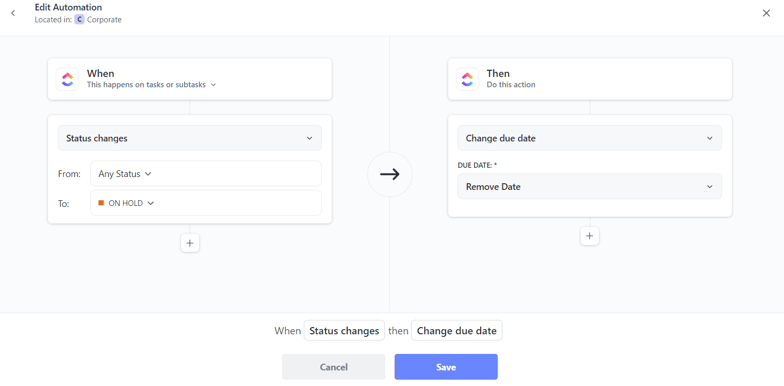

Status Update Emails:
Automate emails to update the team when a task's status changes. For instance, when a task moves from “In Progress” to “Completed,” an email can automatically go out with who finished it and any important notes. This keeps everyone on the same page without extra effort.
Custom Field Triggers:
Create automations that activate based on specific custom fields, allowing for easy, template-based communications. For example, you can set up automated follow-up messages tailored to the status of a customer’s ticket or request.
2. ClickUp Due Date Automation Examples
Automatic Due Date Assignment:
Automatically set a standard due date when a task is created, ensuring consistent deadlines across all locations in ClickUp.
Due Date Adjustments:
Set up automations to extend due dates by a specific number of days (e.g., +3 days) when tasks are updated, such as when checklists are completed. This helps maintain realistic timelines.
Handling On-Hold Tasks:
For tasks marked as "On Hold," automate the removal of due dates to accurately reflect their deprioritized status, keeping the focus on active tasks.
3. ClickUp Comment Automation Examples
Initial Task Comments:
Automate comments to be posted immediately when a new task is created, notifying all involved parties so everyone can start working without delay.
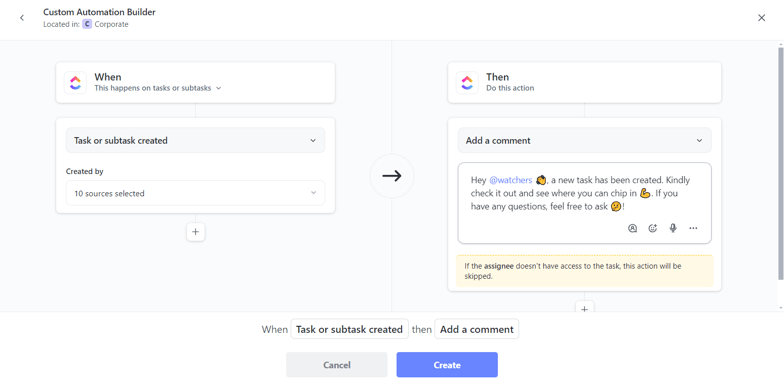

Commenting on Status Changes:
Set up automations to notify assignees with comments whenever there are status updates, ensuring all stakeholders stay informed about task progress.
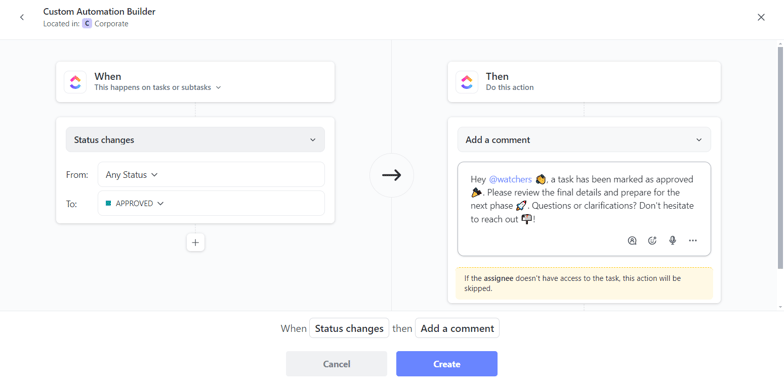

Custom Field-Driven Comments:
Use custom fields to trigger specific comments and notifications, allowing for targeted communication based on the task's parameters.
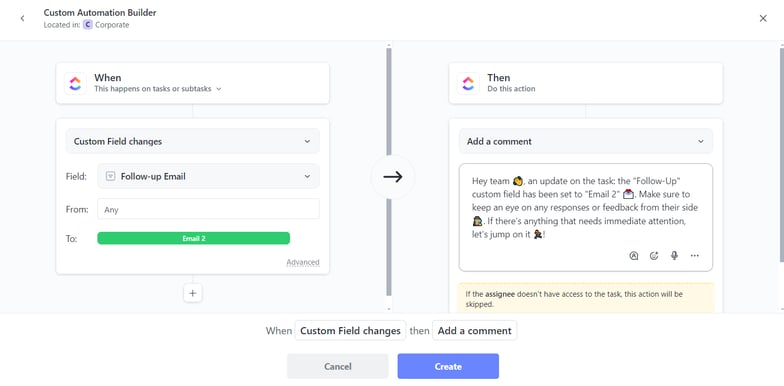

4. ClickUp Assignee Automation Examples
Automatic Assignee Updates:
Set up automation to change the assignee of a task when specific conditions are met, like when a task's status changes to "In Progress."
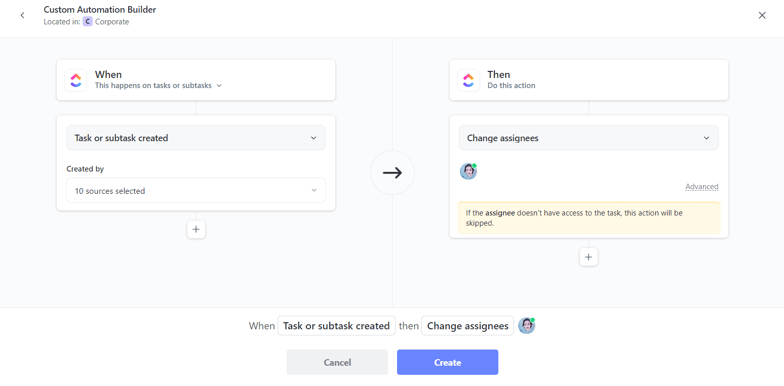

Dynamic Reassignment Based on Status Changes:
Configure automations to update task assignees in response to status changes, such as reassigning tasks to a different team when entering a new phase.
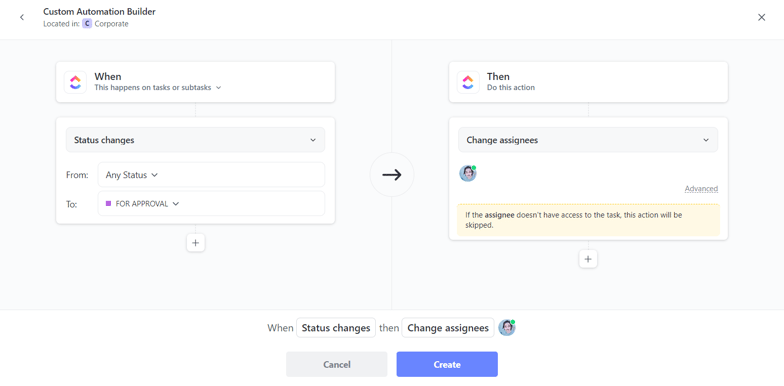

Custom Field Assignments:
Use custom fields to dictate task characteristics, facilitating the automation of team assignments based on specific task requirements or outcomes.
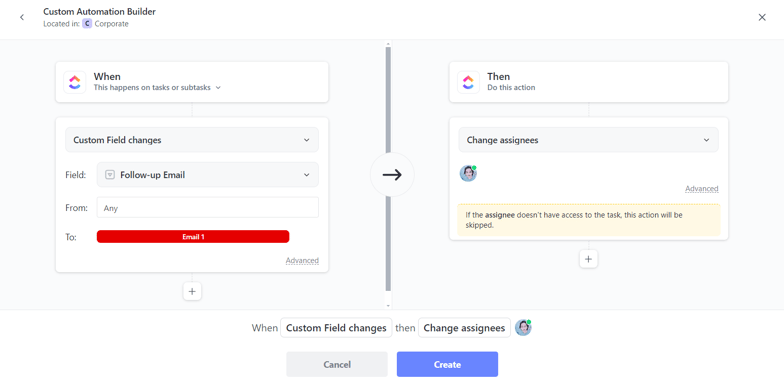

5. ClickUp Archive Task or Subtask Automation Examples
Automated Task Archiving Upon Completion:
Simplify project management by automating the archiving of tasks once they are marked as completed. This keeps your workspace clean and focused.
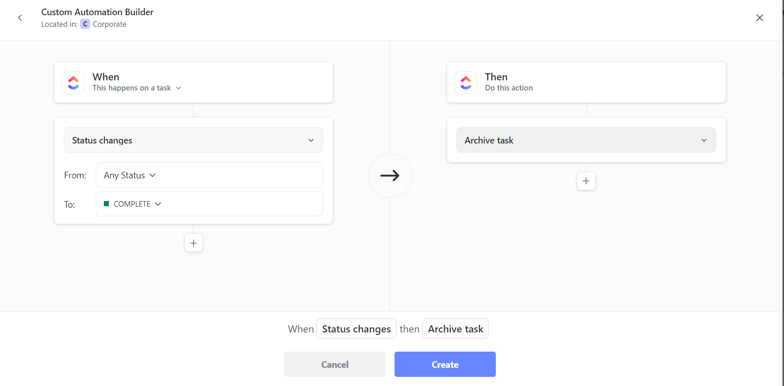

Subtask Completion Archiving:
Extend this automation to subtasks, ensuring that completed subtasks are automatically archived to reflect their finalized status.
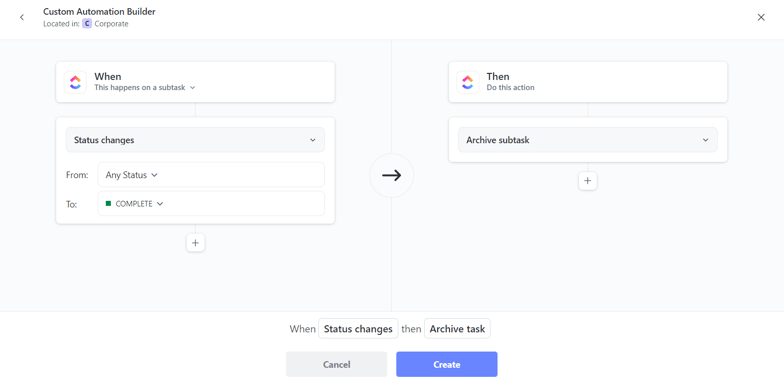

Archiving Aborted Tasks:
For tasks that are discontinued or aborted, implement automations to archive them, keeping your active task list relevant and up-to-date.
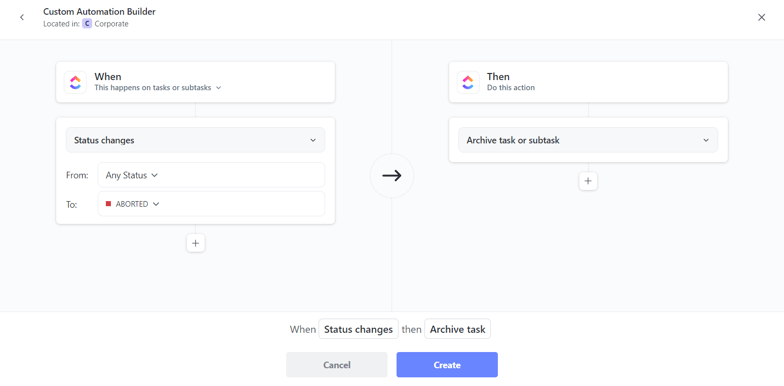

FAQs
1. What is ClickUp automation?
ClickUp automation allows users to set up rules that trigger specific actions automatically, reducing manual effort on repetitive tasks.
2. How can it boost productivity?
By automating notifications and task assignments, teams can concentrate on core activities rather than administrative tasks, enhancing overall efficiency.
3. What email automations are available?
You can automate emails for new task notifications, status updates, and alerts based on specific task conditions to ensure timely communication.
4. How can I automate assignee changes?
You can create automations that change task assignees based on status changes or custom criteria, ensuring accountability and clarity.
5. Can I automate due date assignments?
Yes, you can automatically set due dates upon task creation, adjust them when necessary, and remove them for tasks marked as on hold.
6. How can I automate comments?
Automated comments can be configured to notify team members when tasks are created or when their status changes, promoting effective communication.
7. How do I automate task archiving?
You can set automations to archive tasks once completed or canceled, helping maintain an organized and relevant task list.
Conclusion
Using ClickUp's automation features can really boost your team's productivity and simplify your workflows. By setting up automatic processes for things like email alerts, changing who is responsible for tasks, managing due dates, posting comments, and archiving completed tasks, you make it easier for everyone to stay on track. These simple automation examples help prevent mistakes and keep your projects organized. Embracing ClickUp’s automation tools is a smart way to help your team work more efficiently and focus on what really matters—getting great work done.
At i3 Visionaries, we simplify project management so you can focus on what you do best—growing your business. Our team specializes in enhancing workflows and maximizing tools like ClickUp, from automation setups to task organization.
Solopreneurs, Focus on What You Do Best, We'll Handle the Rest.
Ready to elevate your project management with automation? Contact us to discover how we can help streamline your processes and boost your efficiency.


About Us
Turning challenges into growth with customized support
Navigation
Our Certificates
Email Us
Follow Us
© 2024 by i3 Visionaries. All rights reserved.




